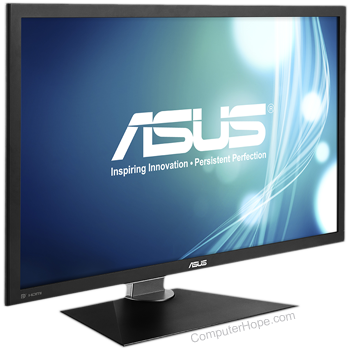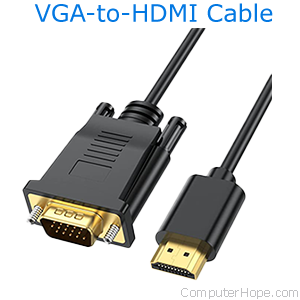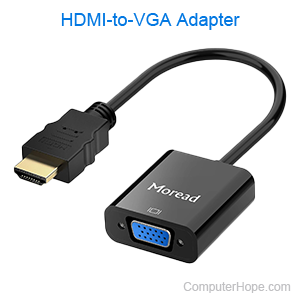How to convert HDMI to VGA or VGA to HDMI

Today's video technology moves away from analog (VGA) toward digital connectivity options like HDMI, DVI, and DisplayPort. However, there are still situations where you must change between display technologies, usually due to differing ports on a computer and display. Video signals may be adapted in either direction (HDMI to VGA or VGA to HDMI, for instance), but there are certain limitations and expense differences.
The following sections show how to convert between these video types. To proceed, select the below option that best applies to your situation or read everything for a broader overview of the subject.
VGA to HDMI

In some situations, it may be necessary to send a VGA signal from a computer to an HDMI port on a newer display device (computer monitor).
To use a VGA-to-HDMI scaler/converter, like the one pictured, follow these steps.
- Plug the VGA connector into the matching port on the back of the computer and secure the screws (optional).
- Take the end with the HDMI connection and plug that into the appropriate port on a compatible display device.
- Use the monitor's buttons to select the appropriate input.
If your computer only has a VGA connection and you have a desktop computer, you may want to consider upgrading the computer's video card.
HDMI to VGA

Converting an HDMI signal to VGA requires an adapter in addition to a basic VGA cable. The adapter is used on computers with an HDMI port and need to connect to a legacy display that only has a VGA port.
As VGA is an older technology, this option may result in loss of resolution. Furthermore, while HDMI can transmit audio, VGA cannot. Consequently, if you're using monitor speakers, they are not able to receive sound from your computer using this method unless you purchase a converter with additional audio capability.
To use an HDMI-to-VGA adapter, like the one pictured, follow these steps.
- Plug the HDMI connector into the matching port on the back of the computer.
- Take a VGA cable and connect one end to the adapter and the other end to the display device.
- Use the monitor's buttons to select the appropriate input.
If your monitor only has a VGA connection, you may want to consider upgrading your monitor.
Signal quality considerations
When utilizing a converter, the signal of lesser quality always determines the final output quality. For example, VGA is an analog signal (subject to interference and signal loss in transit), whereas HDMI is digital (higher fidelity, no signal loss). As such, the VGA signal is the limiting factor of the final output signal.
In other words, converting VGA to HDMI does not improve the signal quality of the original output. Similarly, converting HDMI to VGA often results in a small loss of signal quality.
